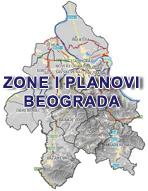Greener cities the key to happier, healthier, stress-free lives
Greener cities the key to happier, healthier, stress-free lives
An artist's impression of Melbourne covered in rooftop gardens and roadway parks. Photo: Anton Malishev
People are biologically wired to need to be close to nature, with more green open spaces and roof gardens needed to support their wellbeing, a new study says.
A lack of access to greenery could play a role in stress and overall poor health, with experts calling on architects and urban planners to provide more green, open spaces in built-up areas.
Curtin University professor Peter Newman, author of the paper Biophilic Architecture: Rationale and Outcomes, said including vegetation as part of building design has been absent in many cities and needs to be given more prominence.
The City of Melbourne's Council House 2 building has a rooftop garden. Photo: Jessica Shapiro
"What biophilic designers see as the missing evolutionary element in modern cities is the need to re-establish an innate connection to nature in everyday life," he said.
Advertisement
He added that a "daily dose of nature" - as originally prescribed by Tim Beatley, a US professor in sustainable communities - was necessary for people's mental wellbeing.
"As biological beings, humans have not adapted physiologically, emotionally, or psychologically to the current sterile urban technological cities," he said.
"This mismatch, where the environment that humans occupy is so removed from the one in which humans have evolved, could be the disjuncture that has led to much of modern stress and mental health issues."
There are also, Professor Newman says, significant social, economic and environmental benefits to including dedicated green spaces in urban areas, especially cities.
Melbourne is home to an increasing number of buildings with roof gardens and green walls and balconies.
The council's Council House 2 building in Little Collins Street is renowned for its rooftop garden and RMIT University's Building 21 on La Trobe Street has a green facade.
The City of Melbourne says vegetation is a "critical urban infrastructure" that is "important to how our city functions as transport networks, and particularly vital to the wellbeing of our community".
"Urban greening also supports Melbourne's economy, providing cooling and amenity which supports the pedestrian economy and reduces operating costs for local businesses."
Kate Lee, a research and teaching fellow in environment at the University of Melbourne, said there is an increasing push for more green spaces, a time when more people not only visit or work in the city, but live there, too.
"Living and working in bustling, noisy, and crowded modern cities can be stressful and can exhaust concentration," she says.
"Concentration is vital for many daily activities like reading, writing, planning, driving, and blocking out annoying distractions."
In some countries, including US, Canada, France, Germany, Austria, and Japan, greenery is mandated or there are incentives as part of building design.
In 2015, a 'pop-up park' was set up in front of the State Library of Victoria, creating a native grassland that mimicked the greenery found in Melbourne prior to white settlement.
RMIT University researcher Luis Mata, who studied insect life in the popo-up park, told a recent conference of the Ecological Society of Australia that they were a great way to bring the natural world into the middle of big cities.
"In an increasingly urbanising world, small, short-lived public green spaces such as pop-up parks may be counted among the few options that human city-dwellers in dense urban areas will have to engage with nature."
Read more: http://www.theage.com.au/victoria/greener-cities-the-key-to-happier-healthier-stressfree-lives-20160126-gmeay5.html#ixzz3ya5WNnS6
Follow us: @theage on Twitter | theageAustralia on Facebook




Коментари
Постави коментар
Ovde možete ostaviti vaš komentar i sugestije